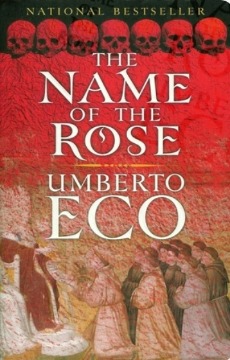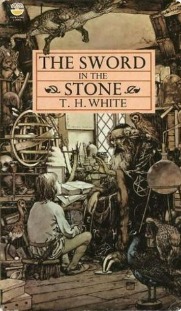Dialogue in historical fiction (Part 1)
- Carol Hoggart
- Jul 23, 2023
- 6 min read
When I’m considering buying a historical novel, I’ll read an opening page or two. One of the things that will make me close that book with a resounding thud, never to pick it up again, is painful historical dialogue. I just can’t believe in characters who speak in a way I find farcical. I lose faith in the whole novel.
So ... historical-sounding speech: how should it be done in historical fiction? In fact, should it be done at all?
This topic is much too big for one blog post, so I’m going to post two. In this post, I consider why historical novelists make their characters speak differently from modern norms in the first place. In brief, it boils down to four principle reasons: historical verisimilitude, characterization, political or social statement, and playfulness with language. To complicate matters, no one reason is likely to operate in isolation from the others. I will define my terms first, and then illustrate their presence and interaction in a number of medieval-set historical novels. (Forgive me. I write in this period, so I’m a little fixated!)
Verisimilitude
Historical fiction promises to transport readers imaginatively back in time whilst leaving their bodies comfortably in the present. To that end, such novels evoke not only great names and dates but also a multitude of little differences proper to the period. It’s all about weaving a spell of pastness – verisimilitude rather than fact, for the reader logically knows they do not enter the real past. The key to creating this verisimilitude is in soaking the narrative in unobtrusive historical detail and having characters reflect this pastness in their actions and thoughts. And, of course, avoiding anachronisms that rudely break the spell of pastness.
But there is a crucial sensory exception to such verisimilitude: dialogue. The modern English speaker transported back in time, to London of the 1200s, for example, would struggle to comprehend what was being said. English language novels set in a non-English speaking context do not present dialogue in, for example, Aramaic or Mandarin. Readers need to understand what’s being said!
Historical novelists are well aware of past language difference, yet there is no straightforward way in which to reflect this in historical dialogue. Cram a story with authentically archaic dialogue and most readers will quickly give the thing up as just too much hard work. Conversely, fill the same novel with wholly modern speech and the jarring sense of anachronism may jolt the reader out of the story-world. The illusion of pastness in historical novel dialogue is a difficult spell to weave.
Characterization
Novelists of all genres employ quirks of speech amounting to non-standard England as a powerful tool for characterization. Authors try to differentiate their characters, to render them unique, ‘real’ and memorable. The way in which protagonists speak is fundamental to indicating their regional, social, and educational background, their current mood, and general character traits. Naturally, the characterizing clout of non-standard speech is harnessed in historical fiction too. That said, there are always additional factors at play guiding the specifics of this characterization in historical fiction – such as socio-political statement.
Political or Social Statement
So far, I have portrayed historical-sounding dialogue as a device, an authorial ruse designed more to trick the reader into belief in historicity or character depth than play any serious role. However, in the hands of some writers, dialogue can relay a deeper political or social message. For example, in Beloved and Sula, Toni Morrison allowed subjugated African-American women to speak in their ‘own’ voices. She had non-standard, oral-type dialogue invade the printed, high-culture medium of literary fiction in a decidedly political statement. Morrison challenged the mainstream of American culture and history by employment of non-normative literary dialogue.
On the other hand, non-standard speech can have disempowering implications and even reinforce social inequalities. Dialect or slang can portray those who use them in a subtly negative light. This ploy is often used for a secondary character the author wishes to paint as an amusing rustic, a lower-class person, or an exotic Other. Alternatively, the accent mocked may be ludicrously aristocratic. The characterization implied by this sort of non-standard dialogue can be quite disparaging unless the author does it for carefully considered reasons, á la Morrison.
Playfulness with language
Finally, authors deviate from Modern Standard English in dialogue out of sheer playfulness, a desire to explore and stretch the potentialities of language. Real people today don’t speak with correct grammar and syntax all the time (or much of the time at all). It’s a fair bet they didn’t in the past, either. Besides, linguistic playfulness increases reader enjoyment in consuming what is, at base, a form of entertainment. Readers relish authorial skill in twisting and teasing known language, especially when presented in the highly-digestible form of dialogue.
Now for some examples
Having described four reasons for deviating from modern standard English in historical-novel dialogue, it’s time to offer some examples.
My first example comes from a (now dead) giant of literary historical fiction. In The Name of the Rose (1980), Umberto Eco creates verisimilitude and characterization of a social stamp through mixed-language speech. It seems only natural that Eco should sprinkle church Latin throughout a novel set in a medieval monastery. Even so, most of his speakers employ quite modern language. It is most memorably a character of dubious intelligence – Salvatore – who cannot separate his Latin from the vernacular:
“I am not homo literatus. I sinned with no malicia, and Signor Bernado Magnificentissimo knows it and I am hoping in his indulgencia in nomine patre et filio et spiritus sanctis …”
Such language characterizes Salvatore as of low social and intellectual class, convincingly immerses the reader in the medieval environment, and yet manages to be (mostly) comprehensible – a key consideration in a novel. Further, there’s a definite spirit of playfulness in Eco’s ingeniously twisted language use.
My second example comes from one of my favourite historical novels for children. T H White’s Arthurian tale, The Sword in the Stone (1938), features many examples of non-standard speech, employed for various reasons. For instance, White inserts sly socio-political commentary under cover of playfulness through the words of minor character King Pellinore. While the hero, the young Arthur, speaks in a simple, direct manner befitting his sympathetic characterization and unknown (as yet) social status, King Pellinore speaks in an extravagant upper-class idiom. When Pellinore meets Wart (Arthur) in the forest, his first words are:
“Ah – hah; whom have we heah, what what?”
“Please,” said the Wart, “I am a boy whose guardian is Sir Ector.”
“Charming fellah,” said the Knight. “Charming fellah. Never met him in my life.”
Through such speech, Pellinore is presented as both upper-class and affably dense. His story-status as a king and his distinctive dialogue, not to mention his obsession with hunting, are used to mark him out as a stereotypical member of the English ruling class. Yet, with distinct playfulness and deliberate anachronism, White has rendered this fumbling ruler’s speech in early twentieth-century idiom rather than medieval. Does White thus cast doubt on the fitness of his upper-class contemporaries to rule? Amusing though King Pellinore may be, White does not intend that we admire him. He is a relic and quite incapable of rule. Admiration is reserved for the humble and plain-speaking hero, Arthur. In the long run, young Wart will prove a breath of fresh air in the overly refined English ruling class. Down to earth and unassuming, he is far better king material than Pellinore and his ilk. White’s playful dialogue sugar-coats a more serious social theme.

For a third, more recent, example, I turn to Bernard Cornwell’s The Last Kingdom (2004), set in nineth-century England.
“Show me your hands,” Leofric ordered. I did and he sneered. “You’ll have blisters soon, Earsling.”
That was his favourite word, earsling. It means arseling. That was me, though he sometimes called me Endwerc, which means a pain in the arse[.]
Most of Cornwell’s Anglo-Saxon dialogue is cast in quite plain modern English. But he frequently scatters Old English words into the speech. Here, “Earsling” characterizes Leofric as foul-mouthed and even a bully, but we soon come to realise with the hero that Leofric possesses a heart of gold (or at least of a semi-precious metal). The Old English endows his plain modern speech with verisimilitude – and, in this case, a dash of humour as well.
Finally, authors can embrace farcically archaic speech in a spirit of fun. Here’s some hyper-medieval dialogue from Sandra Hill’s historical romance, The Bewitched Viking (1999).
“Dost see her familiars anywhere about?” Bolthor asked in a hushed voice. “Ofttimes witches use cats as their familiars.”
They all scanned the horizon. Not a cat in sight.
“Perchance,” Rurik said hesitantly, “her familiars are sheep.”
The conventional image of the medieval witch takes a playful turn when framed by cliched archaisms “dost”, “ofttimes”, and “perchance”. The words also characterize their Viking speakers are a little low on intelligence. Is verisimilitude undermined by making Old Norse speakers use such anachronistic archaisms? Perhaps, but I for one am willing to grin and bear it.
To conclude ...
There you have it: my take on why novelists choose to make their historical characters speak in ways that deviate from modern standard English. I guess that many authors are unaware of what prompts their dialogue choices. Or perhaps they are influenced by current trends in their genre or intentionally making a literary statement. Whatever the case, historical novelists, please think about your dialogue choices and don’t make me throw down your books in disgust!
My next post will address the “how” of historical speech. What are the tactics novelists use to create verisimilitude, characterization, socio-political statement, and/or sheer fun with dialogue?

_edited.jpg)















































Comments